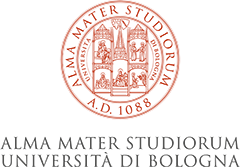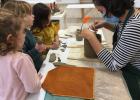Identification Plan
- Getting to know the relation between childhood, artists and teachers
- Specify the conditions of the expression environment
- Define the teachers’ role in this expression environment
Pedagogical Plan
Intellectual/Cognitive Aspects
- Making experiences, manipulating and getting to know different materials and techniques or body actions
- Development of paying attention processes
- Learning the social values such as the respect for the others and for the objects and materials
- Development of paying attention and perceptive processes
Socio-relational Aspects
Aesthetic/emotional/linguistic Aspects
Methodological plan
Children aged between 2 and 3 years need to express themselves and we offer them a context where they can satisfy this natural need. The school has been able to find out that children need to express themselves, regardless of the tools offered. In a psychomotor context, they express themselves by using the body; if they find themselves in a space with clay, they express themselves by using the hands; in a narrative environment, they express themselves through communication
We believe that the context is what determines the form of expression. In this sense, we consider that the contexts have to be well organized in their furniture and materials. Each child has a personal space that allows them to express themselves freely. If we delimit this personal space with a piece of wood and create visual borders, we are making it easier for them to respect these spaces.
In the configuration of the space, we take into account a series of conditions:
- Space where children can express themselves freely. To facilitate this, we offer two types of space: one for modelling with clay and one for tracing.
- Respect for personal space. Each child has a 35x35cm surface at their disposal where they can develop their creations. If they need more space, we give them some more. The instructions provided consider the freedom of expression without invading another child's personal space.
- The adult takes care of the children’s needs. The adult neither gives the children instructions nor does what children cannot do by themselves. The role of the adult is helping them to fulfil their needs, so that they can focus exclusively on expressing themselves.
- Space of non-judgment. We want it to be a space where children are not afraid to express themselves, where there’s no fear of making mistakes, the risk of being conditioned by the adult’s positive or negative judgment.
An external observer has been monitoring the activities going on in the space of expression for six months. Two of the six teachers participating in the space have been taking notes of what was happening in each of the sessions and the artist as well has been systematically writing down the materials used according to the requests made, the type of relationship established with the boys and girls and some anecdotes, comments and spontaneous behaviours.
Stages of the Project
Initial phase
Children enter the space and the proposal of the play is explained, as well as the instructions needed to carry it out properly.
This initial proposal lasts about 5-10 minutes only, because the space is presented and the slogans are verbalized.
The artist is already in the space doing her work and the children place themselves randomly in different spaces to start the creation. The artist is in the center and the tables are placed all around her.
Intermediate phase
In the space of expression nothing is taught, no guidelines are set to follow. We rather allow each child to express themselves freely, always respecting everyone’s creation.
The proposal lasts 1h per week. We believe that it is the right time to enter the space, settle in and create freely.
This space hosts fifteen children aged between two and three years old, a potter who develops her work and two teachers who take care of the needs of the people who are in this educational context.
Final phase
This is the moment of collection. It implies destroying what has been created, because we are demonstrating that the important thing is not the final result, rather the process, that is what we have experienced during the session. We don't save the objects created because we don't want to display them. We believe that children of this age do not want to communicate anything to anyone. They want just express themselves, their needs, concerns and desires. After destroying the creations and collecting the mud from all the boys and girls, we clean our hands.
This final proposal lasts 5-10 minutes
The artist collects her utensils and creations and the children collect theirs together with their teachers. Then, they put them aside and go to another play space in the school.
- During the process of creation, the personal space of each child is respected.
- The artist also provides spaces for attention, because after observing her work, the children focus on her creation and take some time to manipulate and experiment. A calm and respectful context for the personal space of each person is generated.
- The children have learnt that the process of creation is not immediate but requires systematic actions. It takes work and time to achieve a result. In the workshop not only is discourse thought and constructed by using the verbal language, but processes are mainly elaborated through other languages: visual, performative or plastic.
The potter performs different techniques, and the children try to reproduce them:
- Coiling technique. The oldest method known for the modelling of containers, although it also allows the modelling of any sculpture.
- Pinch technique: the most suitable for small objects, such as glasses or small glasses of coffee and tea. It gives a rougher and more uneven result, but they have the distinctive stamp of having been worked entirely by hand.
- Plate technique: there are many possibilities. Curved or irregular shapes can be achieved with this method, adapting the plates to the desired shape. This technique allows to apply textures with different types of materials. Everything that comes to mind: natural elements, fabrics, etc. with the help of the roller we press to give the desired relief
The base material of the expression space is clay, but natural materials such as acorns, sticks or leaves and utensils such as the lace, the emptying tool or the roller have also been used.
In the space of expression much importance is given to the creative processes carried out by children, not to the final result. We believe that creation is a form of expression. In this sense, we do not save the final creations or exhibit them, but the children themselves destroy them at the end of each session and in the next one they start over reusing the material.



